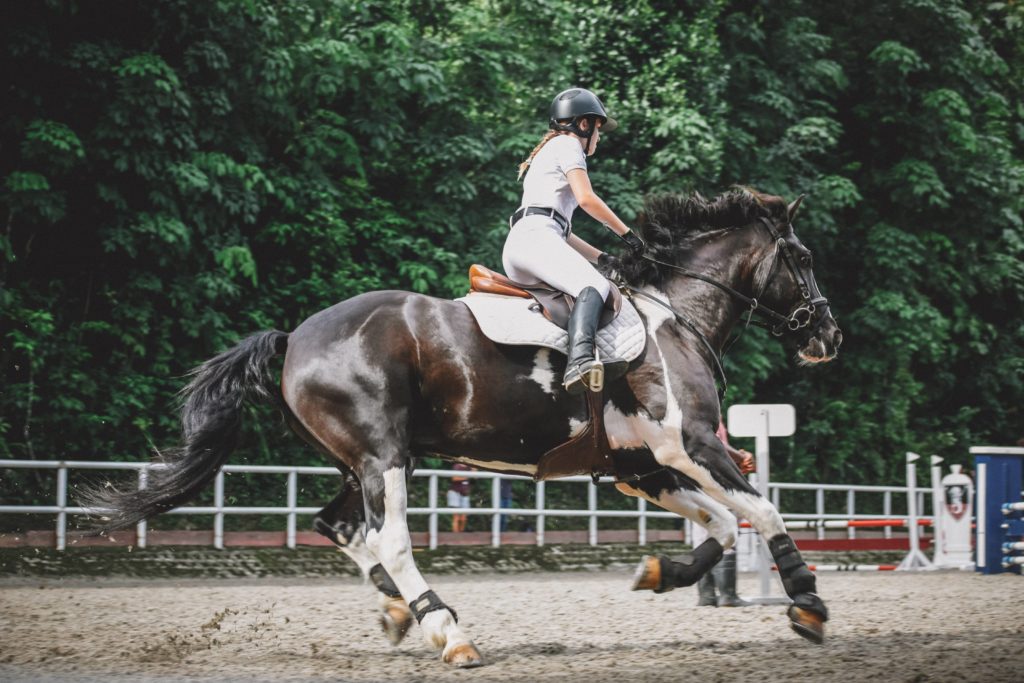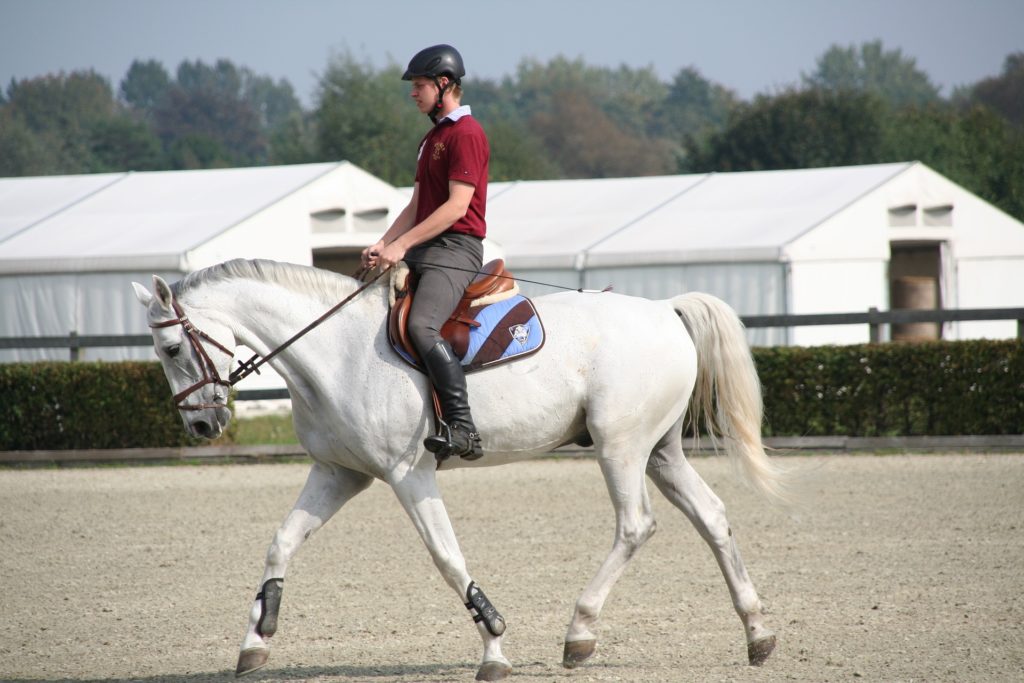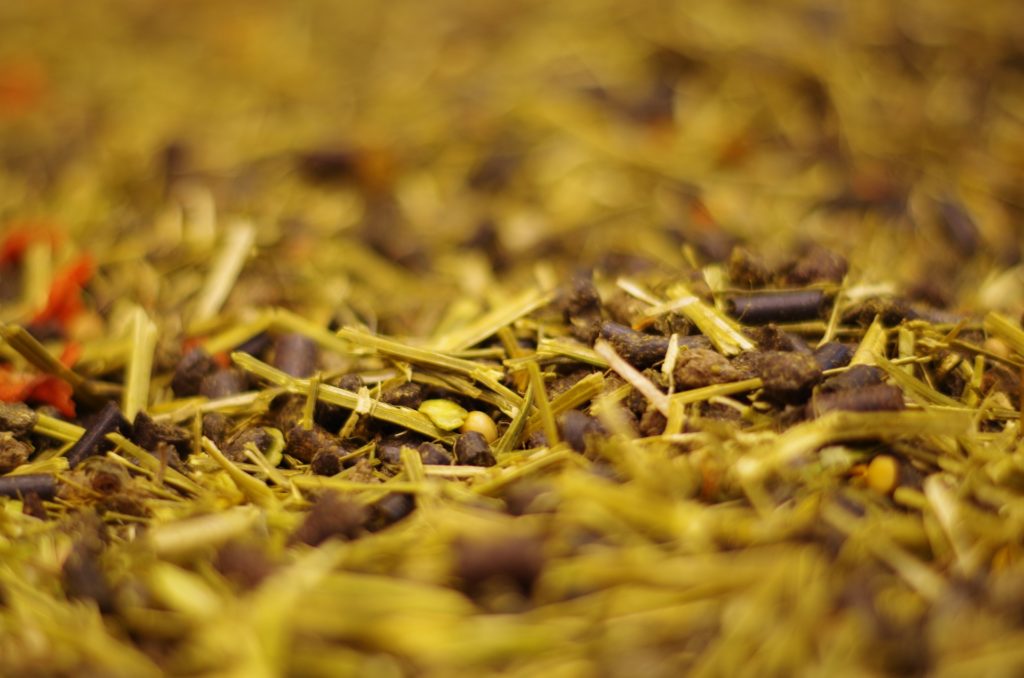vendredi, 4 mai, 2018
Parmi les problématiques de l’entraînement, celle de l’optimisation de la récupération du cheval après un effort mérite une attention toute particulière.
La récupération regroupe l’ensemble des processus et stratégies mis en œuvre permettant à l’athlète de retrouver l’intégrité de ses moyens physiques.
Il s’agit d’optimiser le temps nécessaire après une performance pour que l’organisme retrouve un état compatible avec la reproduction d’une performance égale. La reprise de l’effort avant le rétablissement d’un certain état biologique dit optimum, peut entraîner une diminution des performances subséquentes. Mais également l’accumulation de la fatigue et ses risques associés (surentraînement, blessures).
Les objectifs des différentes stratégies utilisées en récupération dépendent du niveau de fatigue induit par l’effort. Et aussi de la discipline et des groupes musculaires fonctionnels.

A l’issue d’efforts dits épuisants, les modifications physiologiques et biochimiques induites peuvent s’avérer notables et durables. Elles nécessitent alors des modalités de récupération adaptées. Les priorités de la récupération sont alors l’élimination des métabolites issus de la contraction musculaire, ainsi que la restauration des réserves énergétiques et de l’équilibre acido-basique. C’est indispensable pour préparer les systèmes én犀利士 ergétiques à de futurs efforts.
La récupération dite active consiste à réaliser un exercice sous-maximal en utilisant les groupes musculaires précédemment activés. Elle permet d’augmenter le débit sanguin musculaire pendant la récupération. Cette augmentation du débit sanguin est accompagnée par une augmentation de la consommation d’oxygène (VO2). Cela permet notamment une réutilisation de certains métabolites dans la resynthèse de l’ATP (principale source d’énergie).
« Le lactate sanguin n’est, dans ce cas là, pas un ennemi, mais bel et bien une source potentielle d’énergie ! »
L’intensité de la récupération ne doit pas être trop élevée pour ne pas endommager davantage les muscles précédemment sollicités. Elle ne doit pas être trop faible non plus, pour assurer un certain flux sanguin. En effet, le maintien du flux sanguin pour l’élimination des métabolites musculaires apparaît comme un facteur important pour la récupération de la performance. L’intensité couramment définie est environ 70 % de la fréquence cardiaque maximale (FCMax).
Par exemple, lors d’un test d’effort standardisé, la fréquence cardiaque maximale de mon cheval est 220 bpm. En phase de récupération active, mon cheval devra avoir un niveau de fréquence cardiaque d’environ 150 bpm. En dessous, il éliminera quand même les toxines, mais ça sera plus long. Au-dessus, mon cheval consommera des substrats énergétiques supplémentaires, il commencera à les dégrader partiellement et donc à créer des toxines. L’idéal se situe donc vers 70% de la FCMax.
En terme de vitesse, si mon cheval atteint sa fréquence cardiaque maximale à une vitesse de 36 km/h (10 m/s), alors l’intensité de sa récupération active devra être d’environ 14 km/h (4m/s).

Le maintien du flux sanguin pour l’élimination des métabolites musculaires peut également être réalisé localement. Ce processus est réalisé avec de l’éléctrostimulation à basse fréquence.
L’utilisation de cette méthode engendre en effet des modifications du flux sanguin principalement grâce à des modifications locales, induites par les contractions musculaires rythmiques, telles que l’amélioration du retour veineux.
L’autre avantage de l’électrostimulation pour chevaux est la sollicitation des groupes musculaires sans déplacement ni contrainte additionnelle au niveau des membres.
Bien qu’ayant initialement pour objectif principal l’augmentation de l’amplitude articulaire, les étirements se sont progressivement vus attribuer des vertus quasi universelles allant de leur rôle primordial pour l’échauffement à la prévention des accidents à la récupération…
S’il a été conclu que les étirements réalisés avant l’effort étaient le plus souvent sans effet voire néfastes à la performance, les résultats concernant leur utilisation dans la récupération divergent. En effet, les tensions importantes imposées par les étirements sont à l’origine de microtraumatismes additionnels au niveau de la structure intime du muscle. Réaliser des étirements suite à un effort risquerait donc de rajouter des perturbations musculaires. Les étirements seraient donc à proscrire lors de la récupération. Mais attention, tout dépend aussi de la durée et du type d’étirement (passif, actif, stato-dynamique…).
plusieurs études scientifiques suggèrent que le massage est peu efficace, tant en ce qui concerne l’élimination des métabolites qu’en ce qui concerne la restauration de la force musculaire. Néanmoins, les massages auraient un effet psychologique principalement lié à la libération hormonale. Alors n’hésitez pas à masser votre cheval, vous agirez sur son bien-être !
Une seconde stratégie, permettant d’optimiser le processus de récupération, est la supplémentation nutritionnelle post-effort. En effet, l’effort induit de nombreuses modifications physiologiques telles que les pertes hydro-électrolytiques, la dégradation des cellules musculaires avec pertes protéiques, la baisse des réserves en glycogène, la chute du pH et la mobilisation des réserves lipidiques (suivant l’effort).
Le premier objectif en récupération nutritionnelle sera d’optimiser les stocks d’eau, premier constituant de l’organisme. Il sera également conseillé, en cas de forte sudation et de fortes chaleurs, de compenser les pertes électrolytiques allant de pair avec les pertes sudorales des chevaux.

dès l’arrêt de l’exercice, peut également s’avérer nécessaire. Cette supplémentation permet notamment de compenser les pertes induites par l’effort et de restaurer les réserves corporelles en substrats énergétiques. En effet, l’effort induit des perturbations importantes du métabolisme des protéines, une diminution des synthèses protéiques et une augmentation des processus de dégradation des protéines du muscle. La supplémentation en protéines et en acides aminés peut alors s’avérer être une solution efficace.
Après un exercice, la synthèse des protéines de structure du muscle augmente, de même que la reconstitution de celles-ci. La synthèse protéique musculaire peut s’accroitre jusqu’à de 100 à 200 % dans la phase de récupération et elle se maintient pendant 3-5 h pour certains chevaux et jusqu’à 1-2 jours pour d’autres. Toutefois, le bilan protéique a tendance à rester négatif pendant cette période en l’absence de complémentation en acides aminés.
Ainsi, la complémentation en acides aminés est d’autant plus efficace quand elle est donnée après l’arrêt de l’exercice (dans les deux heures post-exercice). La composition de la supplémentation peut alors jouer un rôle clé en influençant la balance protéique. Il a été montré qu’une supplémentation en acides aminés essentiels (AAE) pouvait stimuler la balance protéique en phase de récupération et ainsi stimuler la synthèse protéique du muscle.
 |
Dr. Justine Guillaume Ph.D Nutrition Equine & |
Justine Guillaume est cavalière et propriétaire de chevaux depuis 20 ans.Elle est docteur en nutrition du cheval athlète. Son désir ? Allier la physiologie à l’effort du cheval, la nutrition et la performance pour rationaliser et objectiver l’entraînement.
Aujourd’hui adjointe de direction et chargée des affaires scientifiques et techniques chez Pommier Nutrition, fabricant et distributeur d’aliments complémentaires pour chevaux, elle a développé une entité Equine Performance Solutions, qui consiste en un accompagnement en terme de préparation physique pour les chevaux.
Pour elle, la préparation physique, ce n’est pas seulement des massages ou des soins pour le bien-être. C’est bien plus que cela ! Avant tout, c’est se préparer l’organisme à performer tout en conservant son intégrité physique. C’est une activité complémentaire. Elle doit servir à l’entraîneur pour mieux connaitre ses athlètes et savoir si son entraînement est efficace. C’est surtout évaluer le cheval et ses qualités physiques à partir de tests d’efforts qui permettront de savoir si l’entraînement est efficace et le cheval progresse, ou s’il est au contraire surentraîné, sous entraîné …
« Les nouveaux outils connectés permettent un accès à une petite partie de leur ‘intérieur’, une mine d’informations ! » – Dr. J. Guillaume
A bientôt pour un nouvel article !
-L’équipe Seaver